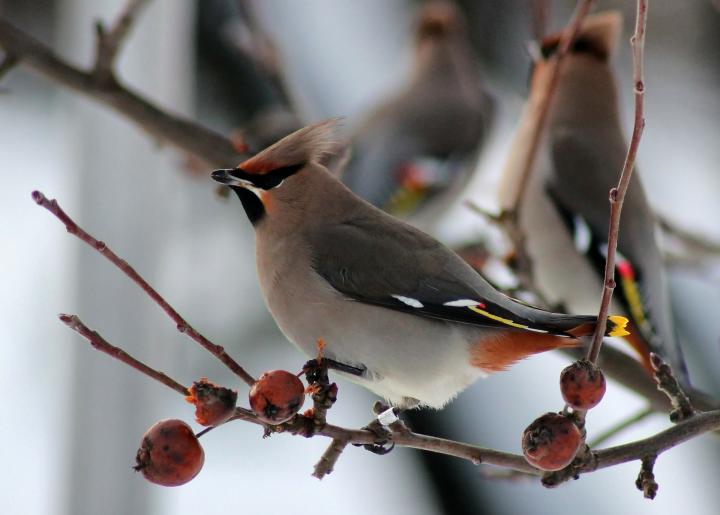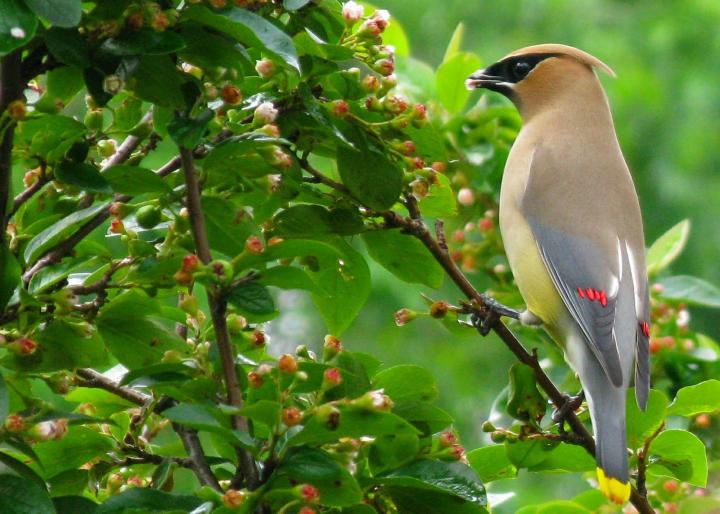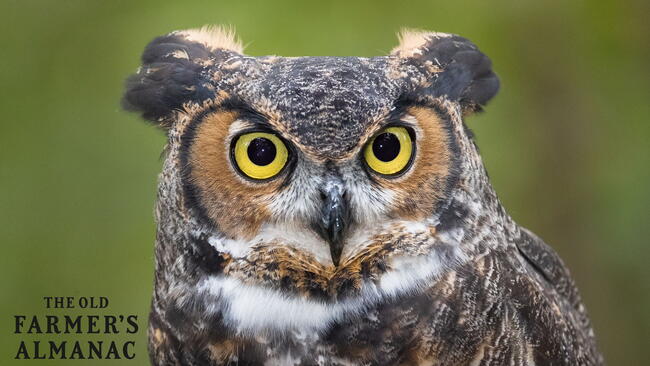
Photo Credit
Pixabay
Subhead
Learn All About Bohemian and Cedar Waxwings!
Living along the shore of Lake Erie in PA watching the Cedar Waxwings in our trees keep us entertained. They are such beautiful birds and so silly flitting branch to branch to get the best fruits.
I live in Southwestern Ontario, Canada. I’ve had waxwings visit my highbush cranberry tree, and gorging on the berries even when they’re not thoroughly ripe. Those
I live in Walnut Creek, California-about 30 miles East of San Francisco, and I saw a few Cedar Waxwings along our Canal Trail on January 4th of this year and December 10th of 2024, on a ligustrum lucidum (Glossy Privet) and on February 15th, 2017 and December 2nd 2016 on some red berries, maybe Toyon?. It is always Such a treat to see them because it's rare. I was lucky to capture a couple of photos of one with a berry between its beak before swallowing, and you could see the lump in its throat ;-)
large flocks of Cedar Waxwing forage on pyrochanthus berries, etc. in Sacramento, CA, springtime, also autumn
I live in Alachua, Florida. When the mulberry tree in the yard has ripe fruit, you can hardly see the tree for the cedar wax wings and it is a huge tree. They don't seem to mind my sitting on the porch and watching them. They make a lot of noise and protect their place in the tree vigoursly
In late summer small flocks of Cedar Waxwings visit our mature crabapple tree. Also, have seen them take small pieces of twin from my fencing, I presume for nesting material. Rehoboth MA
We see them in our yard usually anytime after Christmas. We have 3 crabapple tree all in a row that they converge on. They usually clean one off first and then move on to the next one as the crabapples are 3 different varieties.
We see them every few years in February. They swoop in, strip the trees and bushes of berries in a matter of a few hrs and leave. We live in northeast Ne.
Jan 31st, Helena, Mt. Flock of @ 50. They would fly in formation from a tall Douglas fir to a juniper bush. Back and forth for about a half hour and then they were gone.
For many years the cedar wax wings visited us at our home in a town just north of Dallas each spring. They were particularly fond of the Possumhaw Holly in our front yard, although they visited the burford hollies as well. The Possumhaw is deciduous, losing its leaves in the fall but keeping it's bright red-orange berries which covered all its branches until spring. The wax wings would swoop in and strip all the fruit in a day or two. It was always a sure sign the bush would leaf out again within a couple of weeks.
- « Previous
- 1
- 2
- …
- 10
- Next »











Comments